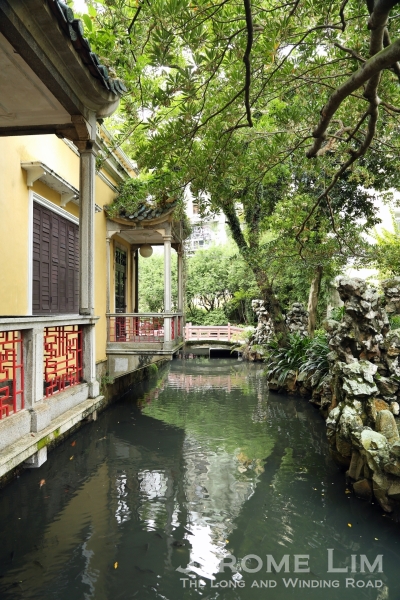Taking an elevator up to the top of a new world that will soon be added to the Marina Bay area in Singapore, a visitor is transported high up into a cloud forest 2000 metres above sea-level. It is a lost world that the doors of the elevator will open to, a world fed by a cool and moist climate in which carnivorous plants, ferns and mosses thrive with the accompaniment of sounds of a cascading waterfall. It was a world that I got a peek at yesterday at a preview of the Cloud Forest which is set within the Bay South Garden one of the three section Gardens by the Bay which will open to the public from 29 June 2012. The elevator that takes one up, doesn’t of course travel that 2000 metres, climbing six floors or 35 metres up a man-made ‘mountain’ right on top of which the Lost World is found. The ‘mountain’, Cloud Mountain, that greets the visitor to the Cloud Forest, the taller of the two cooled conservatories in the Bay South Garden (the other being the Flower Dome), is one that will come the opening of the garden, be covered in lush vegetation and feature some 130,000 plants found in high altitude tropical zones such as on Mount Kinabalu and the mountain regions of tropical Africa and South America.
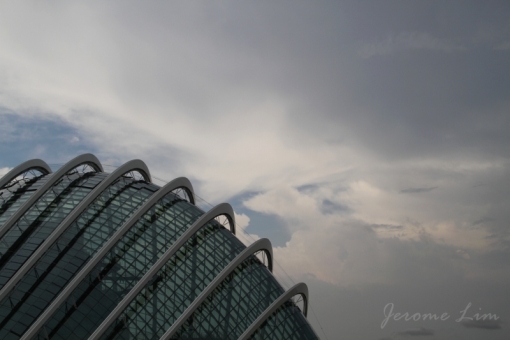
The Cloud Forest, one of two cooled conservatories at the soon-to-be opened Gardens by the Bay takes one on an ascent up into the clouds. Members of the media were given a preview of the conservatory in which the cool-moist climate of the Tropical Montane regions 1000 to 3500 metres above sea level is replicated.
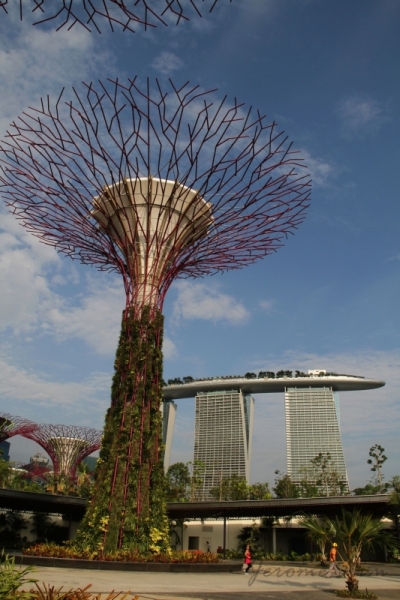
The Bay South Garden, just across from Marina Bay Sands, will open to the public on 29 June 2012.

The Cloud Forest has some 2577 glass panels spread over the 12000 square metre of its surface.
The 58 metre high glass panelled structure which is the Cloud Forest is one within which the cool-moist climate of the Tropical Montane regions between 1000 and 3500 metres above sea level is replicated and besides the Lost World right on top of the man-made ‘mountain’ inside the amazing structure which features some 2577 glass panels of 690 varying shapes and sizes laid over its surface ares of 12000 square metres, is where one discovers eight other unique zones. The nine zones will offer a variety of experiences that aims to provide the visitor with a sense of the biodiversity and ecology of the so-called cloud forests and the various threats the environments they exist in now face. The eight other zones are the Cloud Walk, The Cavern, Waterfall View, Crystal Mountain, Tree Top Walk, Earth Check, +5 Degrees and Secret Garden.
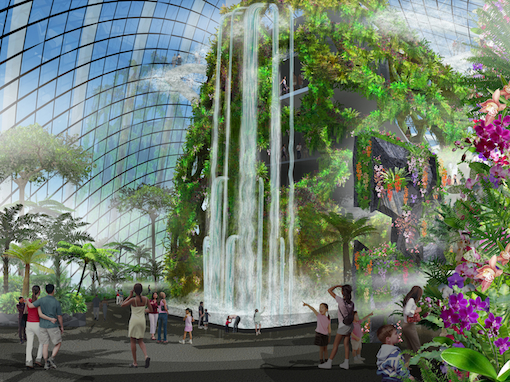
An artist's impression of the inside of the Cloud Forest which features a 35 metre 'Cloud Mountain' with a 30 metre waterfall (image: Gardens by the Bay).
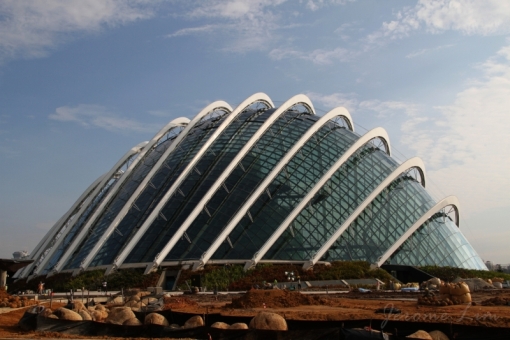
An external view of the Cloud Forest.
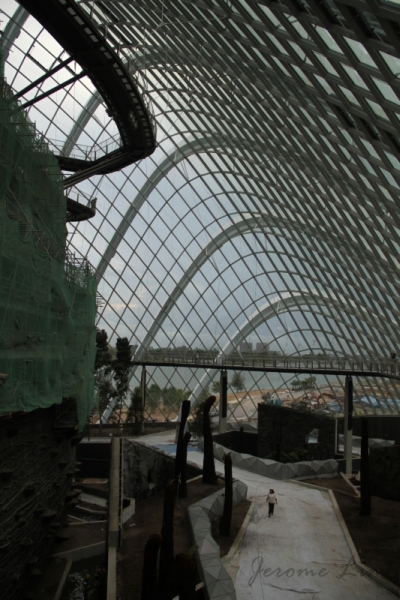
The inside of the Cloud Forest today - very much work that is still in progress.
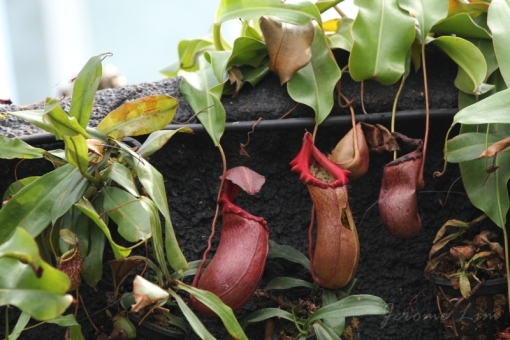
The Lost World will feature carnivorous plants including pitcher-plants.
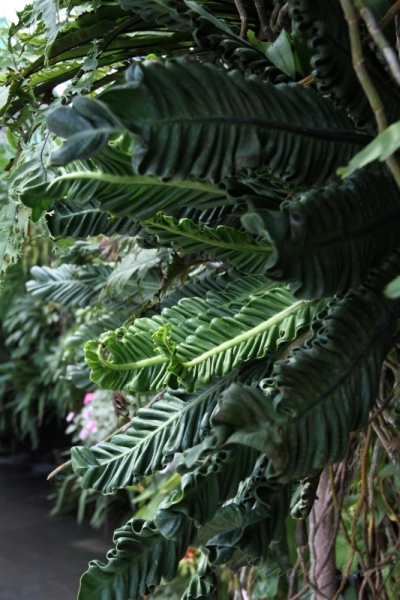
Ferns already thriving in the Lost World.
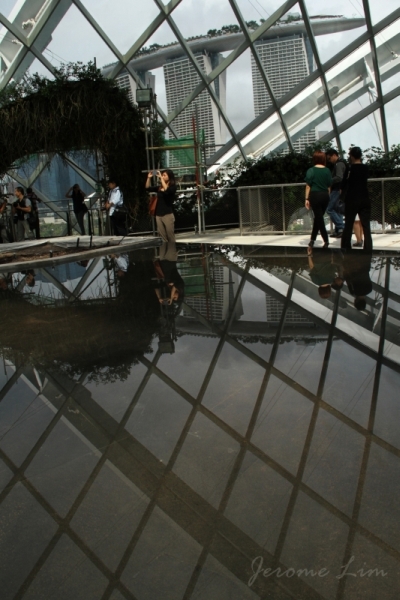
The Lost World, as well as the rest of the Cloud Forest, is still work-in-progress as it is being readied for the official launch of the Bay South Garden which will take place on 28 June 2012 (the garden will be opened to the public from 29 June 2012).
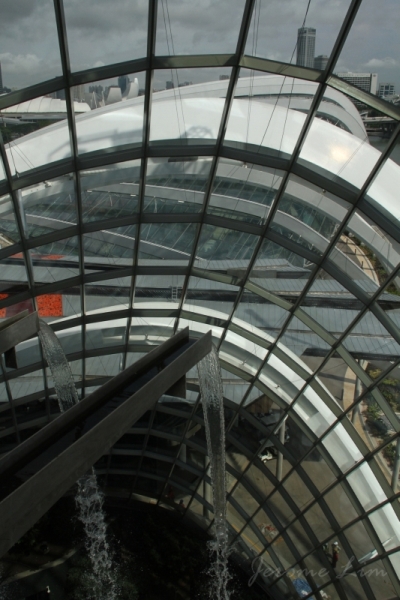
The waterfall flows down from the Lost World.
While the Cloud Forest is very much still ‘work-in-progress’ with it’s primary structure complete with finishing touches being put to it and with it in a ‘planting stage’, it wasn’t hard to visualise what it would be like when it opens in June. Besides the spray of the 30 metre high waterfall on yesterday’s visitors, I could also see that some of the ferns, flowering plants and carnivorous plants of the Lost World seemed to already be thriving. We also got to have a feel of the Cloud Walk – which takes visitors down a cantilevered walkway from the Lost World to the world down below it. Walking down the open metal gratings of the walkway, it wasn’t hard to imagine the view it will offer not just of the epiphytic plants that will clad the side of the ‘mountain’ when completed, but also the sensory experience of the descent down the mountain and the spectacular views of the inside and outside of the Cloud Forest.
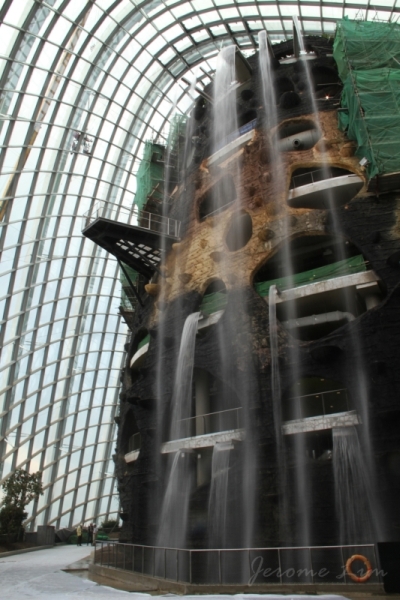
The 30 metre high waterfall down the 'mountain' in the Cloud Forest.
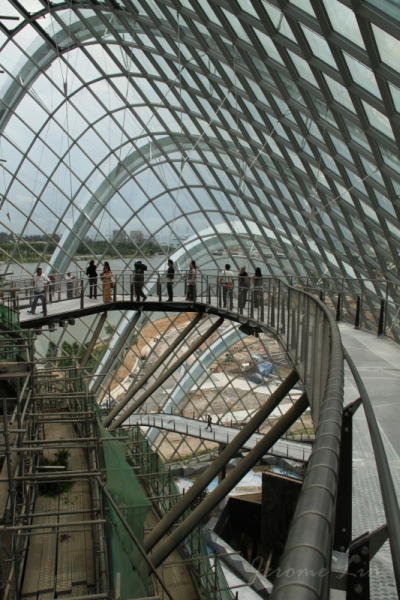
The Cloud Walk which takes one on a descent down a cantilevered walkway on the outside of the 'mountain'.
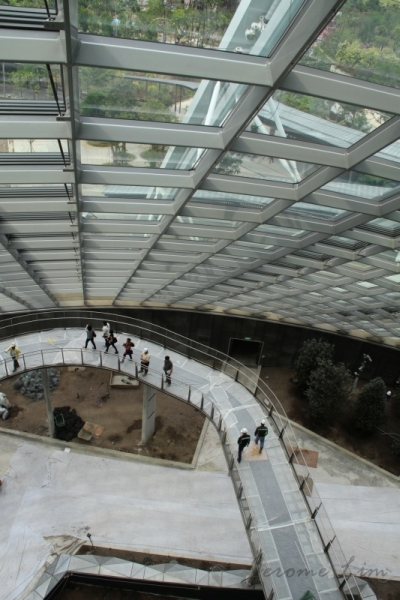
The view downwards from the Cloud Walk.
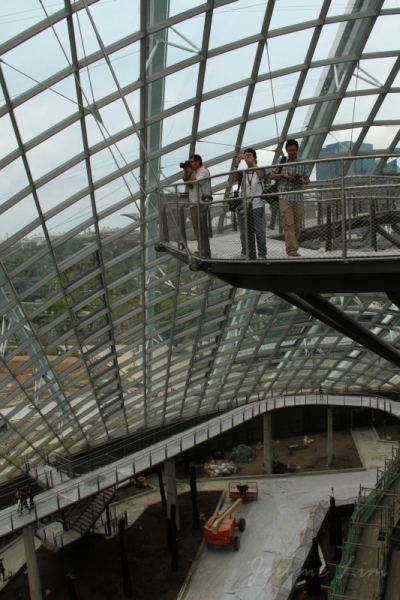
Another view of the Cloud Walk (and the Tree Top Walk far below).
The descent down the Cloud Walk leads one towards The Cavern inside the ‘mountain’ – an education zone where visitors are able to learn more about the cloud forests, as well as to the back of the waterfall – the Waterfall View that prompts the visitor to consider the importance of fresh water and how cloud forests are able to capture water droplets from mist and fog. It is also on the inside that one finds the Crystal Mountain – where one is surrounded by stalactites and stalagmites typical of caves which are a common feature of mountains. Here the visitor will find a showcase on the formation of the continents, the age of the earth and the role that fossils play in helping us understand our planet’s past.
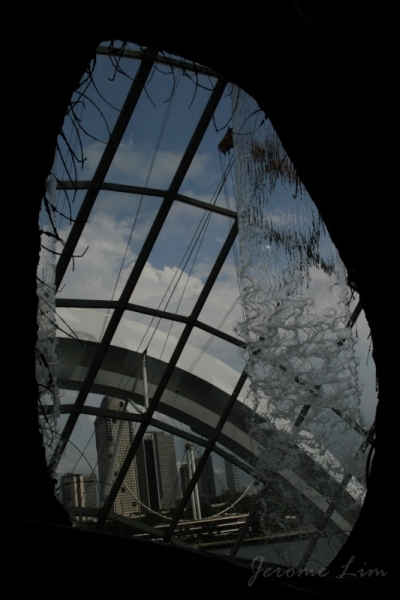
A view of the waterfall from inside the 'mountain'.
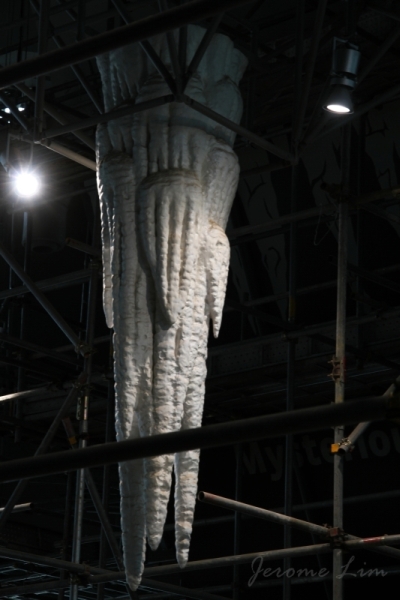
The Cavern will feature stalactites and stalagmites.
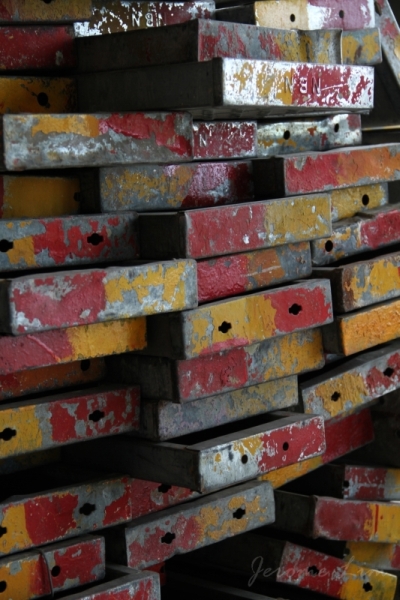
Planks for scaffolding inside The Cavern.
Another walkway that the Cloud Forest will feature is the Tree Top Walk which will take visitors, as the name suggests, over a tree canopy. Besides this, visitors will also find a special lab which provides a view of the state of the earth today and the threats to the earth from climate change and habitat loss – Earth Check. +5 Degrees will provide an experience of the effects of temperature increase due to climate change and Secret Garden at the foot of the mountain is a gentle ravine walk through a narrow gorge that provides visitors close to once abundant but now threatened plants.
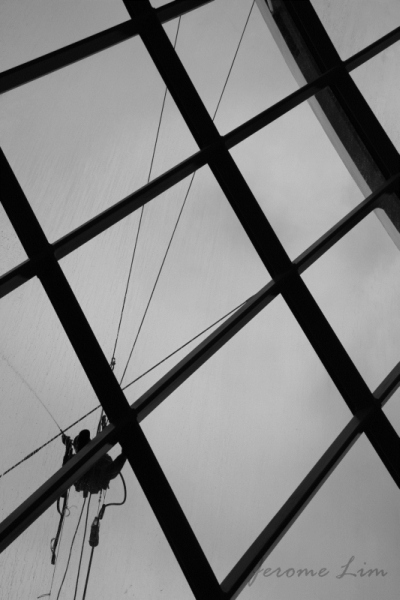
The glass panels of the Cloud Forest being cleaned.
Besides the cool climate of the cloud forests which will be maintained in the conservatory between 23 and 25 degrees C, we got a feel of what the garden will be like. Again, that is very much work-in-progress. Along with the Heritage Gardens, the Dragonfly Bridge and Dragonfly Lake which was opened to the public during the 20th World Orchid Conference World Orchid Show in November last year, we also were taken through the World of Plants. This along with the Flower Dome, a sneak peek of which was given in November, and the Supertrees of the Golden Garden, Silver Garden and the Supertree Grove and Kingfisher Lake will be ready when the 54 hectare Bay South Garden opens in June. The Supertrees of the Supertree Grove will feature a cable suspended Aerial Walkway which we got to see for the first time yesterday.
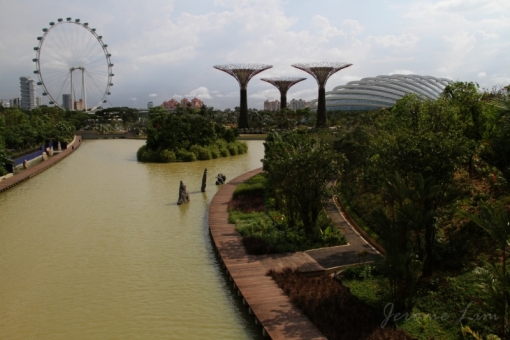
A view of the Dragonfly Lake today from the Dragonfly Bridge.
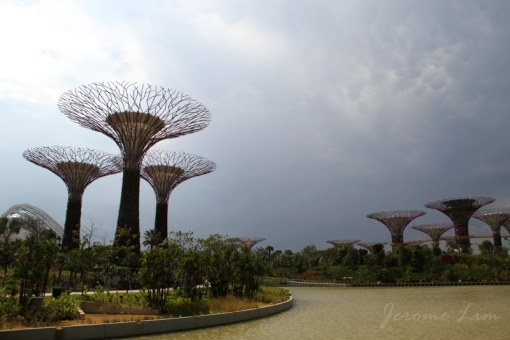
The view of the clusters of 'Supertrees' around the Dragonfly Lake.
In conjunction with the opening (the official launch will be on 28 June 2012 and the garden opened to the public from 29 June 2012), events will be held in the garden over a period spanning two weekends from 29 June to 8 July 2012. The events will include live concerts by Grammy Award winner Jason Mraz and Corrine May, and other activities that include an outdoor movie under the stars.
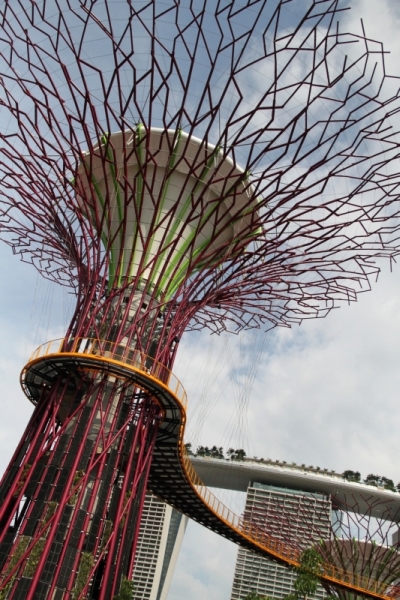
The suspended Aerial Walkway on the Supertrees of the Supertree Grove.
The Bay South Garden will be opened from 5 am to 2 am daily and the cooled conservatories and aerial walkway in the Supertree Grove will open from 9 am to 9 pm daily. Admission to the Bay South Garden will be free, while admission charges will apply for the cooled conservatories and aerial walkway. Rates for local residents for entry to a single conservatory are S$12 (adults), S$8 (senior citizens above 60 years old / children 3-12 years old). Entry to two conservatories will cost local residents S$20 (adults), S$15 (senior citizens above 60 years old), S$12 (children 3-12 years old) and non-residents S$28 (adults), S$15 (children 3-12 years old). Discounts will be available for holders of PAssion Card, NTUC Plus! Card, SAFRA Card and Home Team NS Card. For entry to the Aerial Walkway, rates will be S$5 for adults and S$3 for children. Annual passes will also be available and in conjunction with the Singapore Garden Festival from 7 to 15 July 2012, a joint promotion will be held which offers discounted entry to the conservatories and for the Festival.
Information on Jason Mraz’s and Corrine May’s Live Concerts
Ticket prices (excluding SISTIC charges) for Jason Mraz’s 29 June 2012 Concert are S$98 (purchased before event day) or S$112 (purchased at the door on event day itself) and Corrine May’s 30 June 2012 Concert are S$38 (purchased before event day) / S$45 (purchased at the door on event day itself). Ticket sales start on 20 April 2012 at 9am (online) and 10am (at SISTIC booths).







